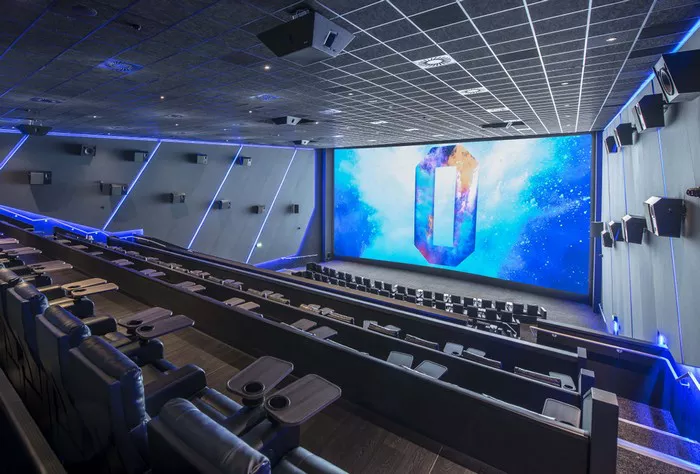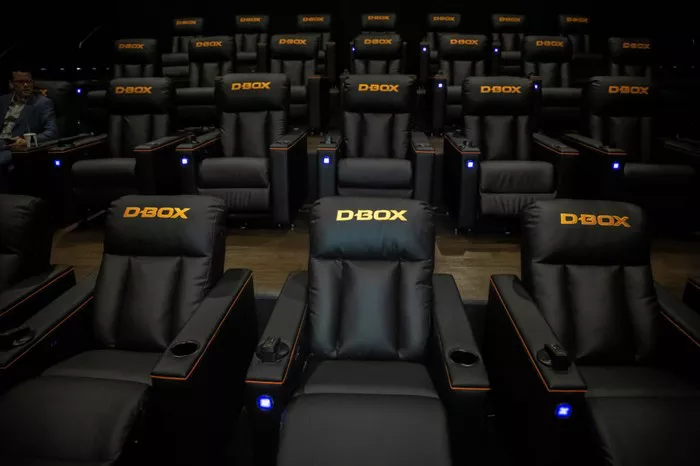In the realm of cinema, technological advancements continuously push the boundaries of storytelling and immersion. One such innovation that has captivated audiences worldwide is iSense 3D technology. Far beyond the conventional 2D viewing experience, iSense 3D at the cinema revolutionizes the way films are presented, offering a depth and realism that transports viewers into the heart of the action. In this comprehensive exploration, we delve into the intricacies of iSense 3D technology, its impact on the cinematic landscape, and the future possibilities it holds.
Understanding iSense 3D Technology: A Leap into Dimensionality
At its core, iSense 3D technology harnesses the power of stereoscopy to create a multidimensional viewing experience. Unlike traditional 2D films, which are flat representations of scenes, iSense 3D introduces depth perception by presenting images in three dimensions. This is achieved through the use of specialized projection systems and advanced optics, which deliver separate images to each eye, mimicking the way humans naturally perceive depth in the real world.
Central to the iSense 3D experience is the principle of parallax, wherein each eye receives a slightly different perspective of the same scene. This subtle offset creates the illusion of depth, allowing viewers to perceive objects as if they were truly three-dimensional. By simulating the way light interacts with objects in space, iSense 3D technology enhances immersion and realism, drawing audiences deeper into the cinematic narrative.
The Evolution of 3D Cinema: From Stereoscopes to iSense
The roots of 3D cinema can be traced back to the early 20th century, with the invention of stereoscopes and stereoscopic photography. These pioneering technologies laid the groundwork for the development of modern 3D film systems, which began to gain traction in the 1950s with the release of groundbreaking films such as “Bwana Devil” and “House of Wax.” However, it wasn’t until the advent of digital projection systems in the late 20th century that 3D cinema truly began to flourish.
The first wave of digital 3D cinema relied on polarized glasses to separate images for each eye, enabling viewers to perceive depth on the big screen. While this represented a significant leap forward in immersive storytelling, it was not without its limitations. Traditional 3D systems often suffered from issues such as crosstalk, wherein ghosting artifacts would appear around objects, detracting from the viewing experience.
Enter iSense 3D technology, which addresses many of these shortcomings through its innovative approach to stereoscopic projection. By utilizing state-of-the-art optics and precision engineering, iSense delivers unparalleled image clarity and depth, free from the distractions of crosstalk and other visual artifacts. This ensures that viewers can fully immerse themselves in the cinematic world without any distractions, allowing them to focus solely on the story unfolding before them.
The Cinematic Impact of iSense 3D: Elevating the Viewing Experience
The introduction of iSense 3D technology has had a profound impact on the way audiences engage with cinema. No longer mere spectators, viewers become active participants in the storytelling process, as they are transported into the heart of the action. Whether soaring through the skies in a thrilling aerial chase or exploring the depths of a fantastical realm, iSense 3D invites audiences to experience films in a whole new dimension.
From a creative standpoint, iSense 3D opens up a world of possibilities for filmmakers, allowing them to explore new narrative techniques and visual aesthetics. Directors can now leverage depth and spatial relationships to enhance storytelling, using techniques such as depth staging and parallax to draw attention to key elements within a scene. This adds a new layer of immersion and engagement, as viewers are invited to actively explore the cinematic space and uncover hidden details.
Moreover, iSense 3D technology has the potential to breathe new life into classic films, offering audiences the opportunity to experience timeless stories in a fresh and exciting way. By converting existing 2D films into 3D masterpieces, filmmakers can reintroduce beloved classics to a new generation of viewers, reigniting interest and enthusiasm for cinematic storytelling.
Looking to the Future: The Promise of iSense 3D Technology
As we look ahead, the future of iSense 3D technology holds boundless promise for the world of cinema. With ongoing advancements in display technology and digital imaging, we can expect to see even greater levels of realism and immersion in the years to come. From enhanced resolution and color accuracy to interactive features and augmented reality overlays, the possibilities for innovation are virtually limitless.
Moreover, iSense 3D technology is not limited to the realm of traditional cinema. With the rise of virtual reality (VR) and augmented reality (AR) platforms, we are witnessing a convergence of entertainment mediums, wherein viewers can immerse themselves in fully interactive 3D environments. By integrating iSense technology into these emerging platforms, developers can create experiences that blur the line between fiction and reality, offering users a truly transformative entertainment experience.
Conclusion
iSense 3D technology represents a quantum leap forward in the evolution of cinematic storytelling. By unlocking the power of depth and dimensionality, iSense invites audiences to explore new worlds, experience thrilling adventures, and connect with characters in ways never before possible. As we continue to push the boundaries of technological innovation, iSense 3D stands poised to redefine the future of cinema, ushering in a new era of immersive storytelling for generations to come.

























